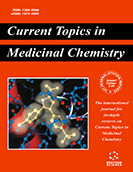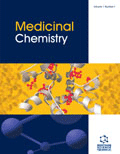Abstract
There is currently far more sequence information than structural information available, and the ability to use homology models for virtual screening applications is desirable in many cases where structures have not yet been solved. This review focuses on the application of protein kinase homology models for virtual screening use. In addition to reviewing previous cases in which kinase homology models have been used in inhibitor design, we present new data – useful for template selection in homology modeling applications - indicating that the template structure with the highest sequence or structural similarity with the target structure may not always be the best choice. This new work explored the simple hypothesis that better results might be obtained for docking a ligand to a target receptor using a homology model of the target created from a different kinase template co-crystallized with the ligand, than from a crystal structure of the actual kinase target that is unliganded or bound to an unrelated ligand. This hypothesis was tested in docking studies of staurosporine with eight different kinases: AutoDock was used to dock staurosporine to homology models of each kinase created from staurosporine-bound template structures, and the results were compared with docking staurosporine to crystal structures of the target kinase that were obtained in complex with a non-staurosporine ligand or no ligand. It was found that the homology models performed as well as or better than the crystal structures, suggesting that using a homology model created from a template crystallized with a representative ligand may in some cases be a preferred approach, especially in virtual screening experiments that focus on enriching for members of a particular inhibitor class.
Keywords: Homology modeling, docking, kinases, staurosporine, virtual screening, AutoDock
Current Protein & Peptide Science
Title: Structure Selection for Protein Kinase Docking and Virtual Screening:Homology Models or Crystal Structures?
Volume: 7 Issue: 5
Keywords: Homology modeling, docking, kinases, staurosporine, virtual screening, AutoDock
Abstract: There is currently far more sequence information than structural information available, and the ability to use homology models for virtual screening applications is desirable in many cases where structures have not yet been solved. This review focuses on the application of protein kinase homology models for virtual screening use. In addition to reviewing previous cases in which kinase homology models have been used in inhibitor design, we present new data – useful for template selection in homology modeling applications - indicating that the template structure with the highest sequence or structural similarity with the target structure may not always be the best choice. This new work explored the simple hypothesis that better results might be obtained for docking a ligand to a target receptor using a homology model of the target created from a different kinase template co-crystallized with the ligand, than from a crystal structure of the actual kinase target that is unliganded or bound to an unrelated ligand. This hypothesis was tested in docking studies of staurosporine with eight different kinases: AutoDock was used to dock staurosporine to homology models of each kinase created from staurosporine-bound template structures, and the results were compared with docking staurosporine to crystal structures of the target kinase that were obtained in complex with a non-staurosporine ligand or no ligand. It was found that the homology models performed as well as or better than the crystal structures, suggesting that using a homology model created from a template crystallized with a representative ligand may in some cases be a preferred approach, especially in virtual screening experiments that focus on enriching for members of a particular inhibitor class.
Export Options
About this article
Cite this article as:
Structure Selection for Protein Kinase Docking and Virtual Screening:Homology Models or Crystal Structures?, Current Protein & Peptide Science 2006; 7 (5) . https://dx.doi.org/10.2174/138920306778559368
| DOI https://dx.doi.org/10.2174/138920306778559368 |
Print ISSN 1389-2037 |
| Publisher Name Bentham Science Publisher |
Online ISSN 1875-5550 |
 14
14
- Author Guidelines
- Bentham Author Support Services (BASS)
- Graphical Abstracts
- Fabricating and Stating False Information
- Research Misconduct
- Post Publication Discussions and Corrections
- Publishing Ethics and Rectitude
- Increase Visibility of Your Article
- Archiving Policies
- Peer Review Workflow
- Order Your Article Before Print
- Promote Your Article
- Manuscript Transfer Facility
- Editorial Policies
- Allegations from Whistleblowers

















.jpeg)








